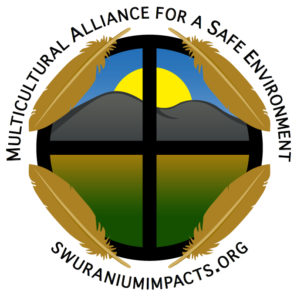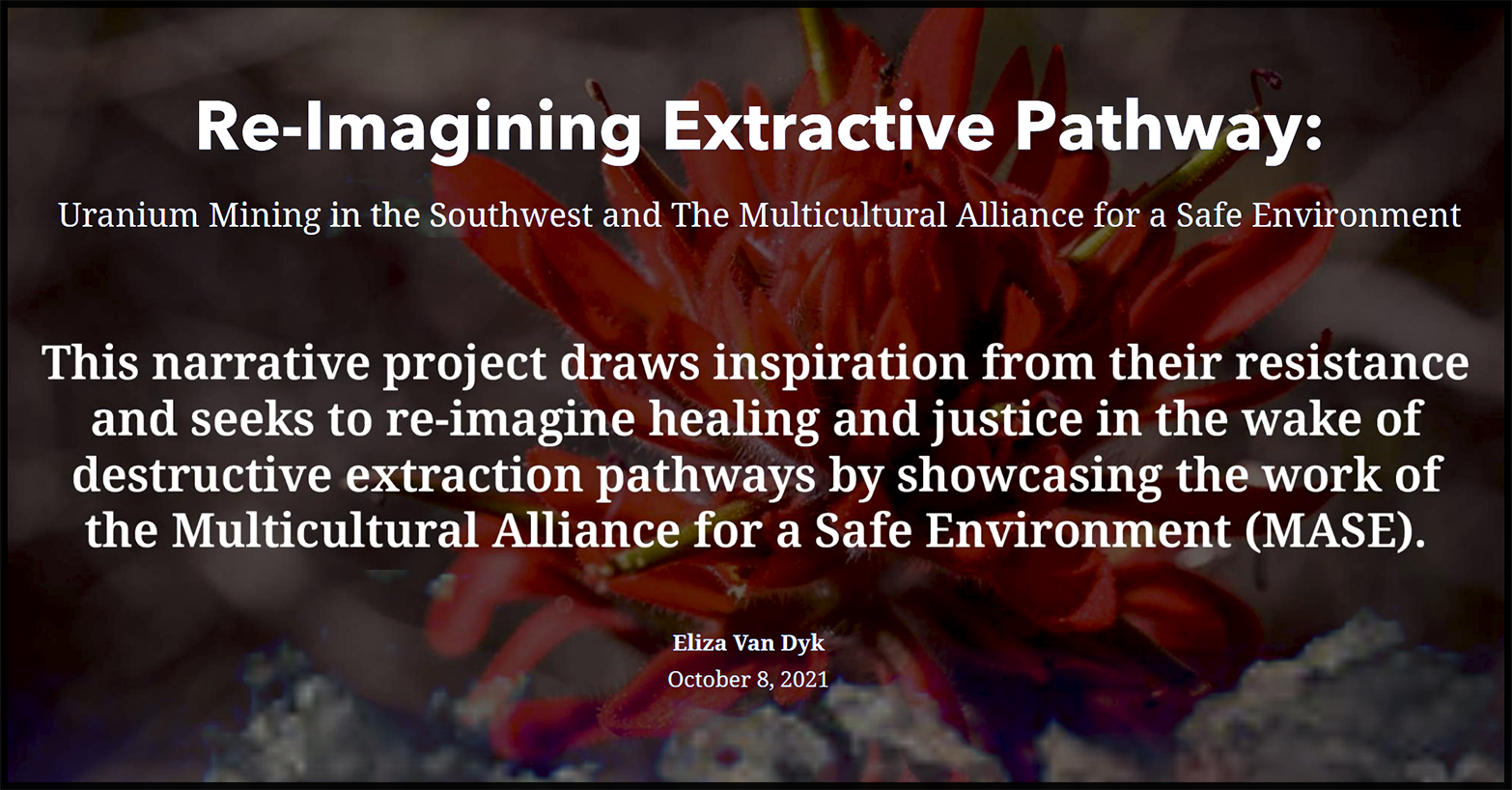Cleanup of abandoned uranium mines set to start after Navajo Nation, EPA reach agreement
Arlyssa D. Becenti, Arizona Republic, January 8, 2025
After years of demanding the cleanup of uranium waste at the Kerr-McGee Quivira Mines on the Navajo Nation community advocates got the news this week that the Environmental Protection Agency will remove waste rock from three areas of the site and move it to a new off-site repository.
The removal of over 1 million cubic yards of radioactive waste from the sites about 20 miles northeast of Gallup will begin in early 2025, the EPA said. The waste will be taken to a new off-site repository at Red Rocks Landfill east of Thoreau, N.M. The process, including permitting, construction, operation and closure of the repository, is expected to take 6-8 years.
“I feel as though our community finally has something of a win,” said Teracita Keyanna, a member of the executive committee for Red Water Pond Road Community Association. “Removing the mine waste from our community will protect our health and finally put us back on a positive track to Hózhǫ.”
Commercial exploration, development, and mining of uranium at Quivira Mines began in the late 1960s by the Kerr-McGee Corporation and later its subsidiary. The mine sites are the former Church Rock 1 (CR-1) mining area; the former Church Rock 1 East (CR-1E) mining area; and the Kerr-McGee Ponds area. The mines were in operation from 1974 to the mid-1980s and had produced about 1.2 million tons of ore, making them among the 10 highest producing mines on the Navajo Nation.
CR-1 and CR-1E encompass fenced areas that include former mining operations, waste rock piles and surrounding contaminated zones. CR-1 spans 42 acres with 147 acres of underground workings, while CR-1E covers 10.5 acres with 96 acres of underground workings.
The Kerr-McGee Ponds area, once used for solids dewatering and protore storage, occupies 9 acres, according to EPA.
Teracita Keyanna, a community member and member of the Red Water Pond Road Community Association, shows learning resources she uses to teach kids about uranium in their communities. Arlyssa Becenti/The Republic
How uranium mining left its mark
From World War II until 1971, the U.S. government was the sole purchaser of uranium ore, driving extensive mining operations primarily in the southwestern United States. These efforts employed many Native Americans and others in mines and mills. Between 1944 and 1986, nearly 30 million tons of uranium ore were extracted from Navajo lands under leases with the Navajo Nation.
Since 2006, the Red Water Pond Road Community Association has been advocating for the removal of all uranium waste from their area, including United Nuclear Corporation uranium mill tailings, Northeast Church Rock Mine waste and Kerr-McGee Quivira Mine waste.
Since 2006, the Red Water Pond Road Community Association has been advocating for the removal of all uranium waste from their area, including United Nuclear Corporation uranium mill tailings, Northeast Church Rock Mine waste and Kerr-McGee Quivira Mine waste.
Each year, the community hosts the Uranium Tailings Spill Legacy Commemoration to raise awareness and educate about the urgent need to clean up the mines surrounding their area.
They also mark the day when the largest radioactive spill in the United States occurred. On July 16, 1979, an earthen dam owned by United Nuclear Corp. broke and released 1,100 tons of radioactive uranium tailings and 94 million gallons of toxic wastewater into the Puerco River, contaminating the river for at least 80 miles and impacting about 11 Navajo Nation communities.
“I think this decision empowers grassroots organizations like ours and our allies to continue to advocate and educate to clean up hundreds of abandoned uranium mines that threaten our Diné communities every day,” Keyanna said.
In September,, the EPA announced its commitment to cleanup efforts at seven abandoned uranium mine sites in the Navajo Nation. These projects will address over 1 million cubic yards of contaminated soil and restore approximately 260 acres of Navajo land, benefiting Navajo communities in the Smith Lake and Mariano Lake Chapters.
With these decisions, the EPA has pledged to clean up over 2 million cubic yards of mine waste across the Navajo Nation. The seven sites slated for cleanup are Mariano Lake, Mac 1 and 2, Black Jack 1 and 2, and Ruby 1 and 3. The cleanups will be carried out as removal actions under the EPA’s Superfund authorities.
How the sites will be cleaned up
The Navajo Nation and President Buu Nygren said the solution stems from a compromise between the tribe and the EPA.
“It’s not everything the three affected communities would wish for but it’s action in the right direction now rather than in the future,” said Nygren. “Most importantly, this will protect our people from harmful exposure.”
The plan creates concerns from those living within the community of Thoreau, where high school students wrote a letter to New Mexico Governor Michelle Lujan-Grisham about the issues they have with the disposal site, which will be located east of the community.
“From our understanding of the proposal, the plan involves transferring 500 barrels of radioactive waste from the Red Water Pond Road community to Thoreau. Additionally, they intend to clean up 19 other mines and relocate all that waste to Thoreau as well. The proposal is to move 10,000 barrels to Thoreau, bury it, and let it sit in perpetuity,” stated a letter from the Thoreau sophomore class.
“We view this proposal as reminiscent of colonialism. Instead of selecting a nearby affluent white neighborhood, they have chosen to place the waste right in the heart of our town. Unfortunately, this aligns with the typical behavior of the federal government, which believes it can expose us to health hazards, desecrate our sacred lands, and make decisions on our behalf without our consent,” the class letter continued.
Though the sophomore class said that most of their parents weren’t aware of the waste landfill plans, the EPA said that for over a decade, the EPA has engaged with communities to address concerns and provide information about investigation and cleanup efforts at the Quivira Mines site.
Cliff Villa, EPA’s deputy assistant administrator for land and emergency management, views this cleanup as an important action and he has personally heard from state and tribal leaders, and from members of affected communities.
“For too long, Indigenous people of the Southwest have been disproportionately affected by the legacy of uranium mining, posing significant threats to their health and environment,” said Villa. “This cleanup, in coordination with Navajo Nation and the State of New Mexico, will permanently address the contamination at the Quivira Mines site and ensure safe disposal to safeguard future generations.”






